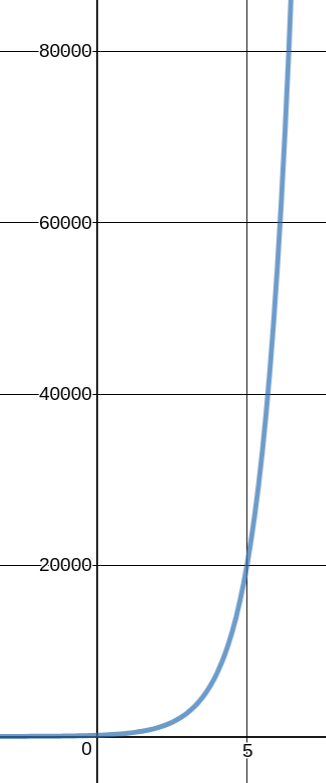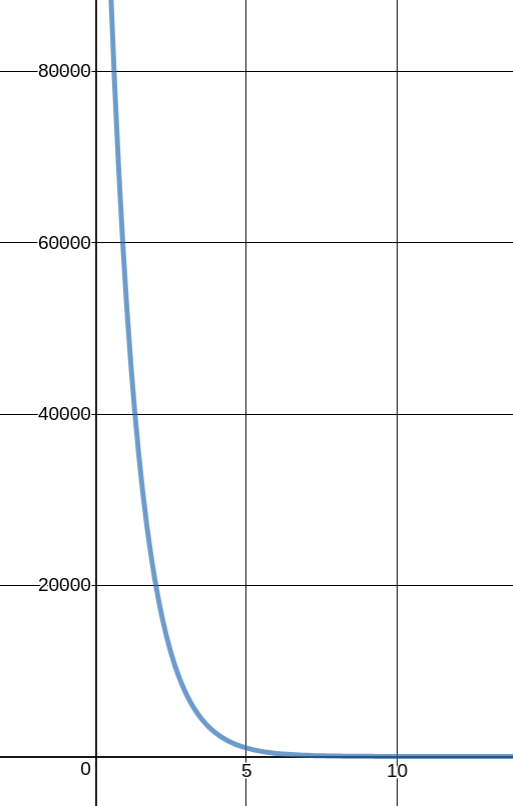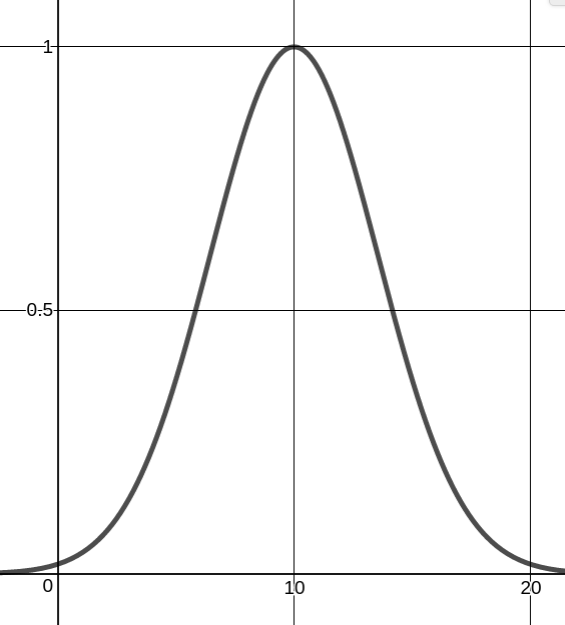We know the blue line is an exponential function because it is near and we know the green line is a logarithmic function because it is near .
Link to textbook: Identify when a real-world situation would require an exponential model.
Note: There is currently no video for this objective. This activity is built as an “interactive activity”, akin to what you would expect in a live lecture.
Introduction
Now that we have looked at logarithmic models, we can look at their natural counter-part: exponential models.
A exponential model is appropriate when the quantities change slowly at first, then rapidly later on.
We saw this issue before: it is extremely difficult to distinguish between and just based on rates of change! Let’s look closer at two examples below:
Common Exponential Models
- Bacterial (unbounded) growth: , where is the initial bacteria population, is the rate the bacteria multiply, and is time.
- Population (bounded) growth: , where is the carrying capacity, is the initial population, and is the rate of growth.
- Continuously compounded interest: , where is the principle (initial money), is the rate of interest, and is time.
- Newton’s Law of Cooling: , where is time, is the difference between initial temperature of object and surroundings, and is the continuous rate of cooling of the object. This model would be used to determine how long a body has been deceased for.
- SIS Model: This describes the infection of a population when the infection does not provide any resistance after infection. Rather than provide an explicit equation, check out this dynamic figure (keep vaccination at 0 to see what an SIS model looks like).
Identifying Exponential Models
Should we model the normal distribution curve above by an exponential function?



